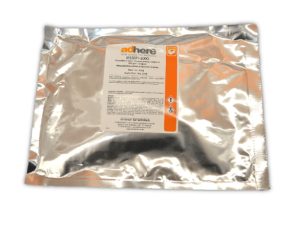 Hygroscopic materials attract and absorb humidity from the air. An example is the way granulated sugar gets lumpy in the sugar bowl or salt clumps in the salt shaker blocking the holes when in humid environments like a steamy kitchen. Lots of materials are hygroscopic, including paper, isopropyl alcohol (IPA), and plastics like ABS. Nylon 6 can absorb up to 9.5% of its weight in moisture. Hygroscopic polymers can be dried to release the moisture back into the air, and often need to be for processing purposes.
Hygroscopic materials attract and absorb humidity from the air. An example is the way granulated sugar gets lumpy in the sugar bowl or salt clumps in the salt shaker blocking the holes when in humid environments like a steamy kitchen. Lots of materials are hygroscopic, including paper, isopropyl alcohol (IPA), and plastics like ABS. Nylon 6 can absorb up to 9.5% of its weight in moisture. Hygroscopic polymers can be dried to release the moisture back into the air, and often need to be for processing purposes.
Materials which are hydrophilic tend to be attracted to water or they easily dissolve in, mix with, absorb, or be saturated by water. In general, hydrophilic describes things that tend to interact with or be affected by water in some way. Again, salt and sugar are good examples of hydrophilic materials, as they easily dissolve in water. Hydrophobic, on the other hand, refers to materials that will repel water. Oils and fats are hydrophobic.
Other materials which are hydrophilic are polyurethane-based (PU) adhesives and potting compounds. We say they are moisture-sensitive, as they can be adversely affected by moisture prior to use. Some single part PU adhesives cure with moisture, and we have a number of UV adhesives and coating which have a secondary moisture cure like Dymax 3401 (it is an acrylated urethane chemistry) – but we don’t want that to happen prematurely. To protect against damage or early cure, polyurethane products are often packaged in metallic bags or containers, and the packing may include desiccants to keep the materials dry. If you are dispensing these products, then the reservoirs can be fitted with driers (desiccants) in the lids. Dry nitrogen can be used to purge the reservoirs, or pressurised to drive the materials during application.

IRS 3071 Polyurethane potting compound is packaged in a metallic bag with desiccants to protect from moisture before use
If you see bubbles emerging during potting process using a polyurethane compound, then one of the causes could be moisture in the electronic assembly. The fix for this would be to bake the assembly before potting. We have a good White Paper about this, explaining more: Potting and encapsulating – avoiding voids.
With all these “hygro”s and “hydro”s flying around, what about “hydroscopic”? Well that word doesn’t really exist… and we’ve all made that mistake. The correct words to use are hygroscopic and hydrophilic.
Categories: adhere academy, adhesives, potting compound
